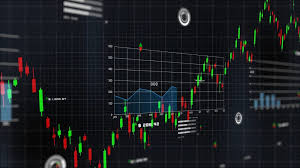Understanding Crypto Trading High-Frequency Strategies, Risks, and Future Trends

Understanding Crypto Trading High-Frequency
The landscape of finance has been transformed by technology, particularly the advent of high-frequency trading (HFT) in cryptocurrency markets. HFT leverages advanced algorithms and super-fast trades to capture minute price discrepancies in rapidly changing markets. This article delves into the essentials of Crypto Trading High-Frequency http://recursosanimador.com/scripts/librovisitas2.php?pagina=9142, exploring its strategies, benefits, risks, and implications for market dynamics.
What is High-Frequency Trading?
High-frequency trading is a form of algorithmic trading that uses complex formulas and powerful computers to make a large number of trades at extremely high speeds. The primary aim is to exploit small price differences, often measuring milliseconds or microseconds. In the context of cryptocurrency, HFT takes advantage of the high volatility and liquidity present in various exchanges.
The Evolution of HFT in Crypto Markets
While high-frequency trading has been a staple in traditional markets for years, it has seen significant growth in cryptocurrency trading since Bitcoin’s inception in 2009. The cryptocurrency market, characterized by its 24/7 operation, decentralized trading models, and dramatic price movements, presents unique opportunities for HFT strategies. As technology advances, the ability to execute trades at lightning speed has given rise to numerous sophisticated trading platforms and firms specializing in HFT.
Key Strategies in High-Frequency Crypto Trading

Several strategies have emerged in the realm of high-frequency crypto trading, each designed to capitalize on the quirks of market behavior:
- Market Making: Involves providing liquidity by placing buy and sell orders simultaneously. Market makers profit from the bid-ask spread.
- Arbitrage: This strategy takes advantage of price differences across different exchanges. By simultaneously buying and selling the same asset, traders can lock in profits from discrepancies.
- Trend Following: Utilizing algorithms to analyze market trends and predict future price movements, traders can execute a series of trades designed to benefit from those trends.
- Statistical Arbitrage: This involves using mathematical models to find mispricings between related cryptocurrency pairs and executing trades based on statistical analysis.
Technological Infrastructure: The Backbone of HFT
Success in high-frequency trading is heavily dependent on technology. The following components are crucial for effective HFT:
- Low Latency Connections: Fast internet connections and proximity hosting at trading venues reduce latency, allowing trades to be executed more quickly.
- Advanced Algorithms: Algorithms analyze market data and execute trades in fractions of a second, allowing traders to capitalize on fleeting opportunities.
- Big Data and Machine Learning: Data analysis tools and machine learning models help traders refine their strategies by predicting market behavior based on historical data.
The Risks Involved in HFT
Despite its potential for profitability, high-frequency trading in cryptocurrencies is fraught with risks:

- Market Volatility: Cryptocurrency markets are notorious for their volatility, which can lead to significant losses in a very short period.
- Technological Failures: Reliance on technology means that technical failures, such as server outages or connectivity issues, can result in substantial financial losses.
- Regulatory Uncertainty: The evolving regulatory landscape for cryptocurrencies adds an additional layer of risk, as changes can impact the legality and viability of certain trading strategies.
- Competition: The proliferation of HFT firms means intense competition, making it challenging to maintain an edge and consistent profitability over time.
The Future of Crypto Trading High-Frequency
As the cryptocurrency market continues to mature, the role of high-frequency trading is expected to evolve. Several trends are emerging:
- Increased Regulation: Regulatory bodies worldwide are beginning to impose stricter regulations on cryptocurrency trading, which could impact HFT operations.
- Technological Innovations: Advances in AI and machine learning will likely lead to more sophisticated trading algorithms, potentially transforming HFT strategies.
- Institutional Involvement: As more institutional investors enter the cryptocurrency space, the impact of HFT strategies may become more pronounced, affecting overall market dynamics.
Conclusion
High-frequency trading in the cryptocurrency market represents a captivating intersection of technology and finance. While it offers significant profits for those who can navigate its complexities, it also poses considerable risks. As the market continues to evolve, traders and investors must stay informed about the latest developments in technology and regulation to effectively manage risks associated with this fast-paced trading style.
In summary, understanding the intricacies of Crypto Trading High-Frequency is essential for anyone looking to participate in this exciting and rapidly growing field. Whether you are an experienced trader or new to the world of cryptocurrencies, staying informed and adaptable is key to success in this dynamic environment.
Comentarii recente